queen
“It seems a guardian is gone”: PM pays last respect to Queen Elizabeth II
Prime Minister Sheikh Hasina today paid her last respect to Queen Elizabeth II.
Sheikh Hasina arrived in London, on an official visit to the United Kingdom, on September 15 to attend the funeral of Queen Elizabeth II.
Bangladesh High Commissioner to the UK, Saida Muna Tasneem, while briefing reporters said that in the morning the Prime Minister along with her younger sister Sheikh Rehana went to the Palace of Westminster to pay their last respects to the Queen.
Read Buckingham Palace calling: King Charles thanks PM Hasina, wishes Bangladeshis well
Sheikh Hasina observed a minute-long silence as a mark of respect to the late queen at the Westminster Hall of the palace where the body of Elizabeth II was kept in the lying-in-state.
Earlier, on her arrival at the Westminster, Representative of the British Speaker received the PM and her younger sister.
Later, they were taken to Lancaster House where the condolence book was opened.
PM Hasina wrote her condolence message in Bangla.
Read: PM lands in London to attend Queen’s funeral, will leave for NY on Sep 19
After that the Prime Minister was taken to another room where she made her tribute to the Queen in front of a camera.
At the Lancaster House, UK State Minister for Foreign Affairs Vicky Ford received her.
The PM reminisced that she met the late Queen eight or nine times and the latter used to know her by her first name.
“She was a motherly figure to me,” she shared with the UK state minister for foreign affairs.
Read: Commonwealth must keep Queen's memory alive: PM Hasina
“… It seems a guardian is gone,” PM Hasina added.
Saida Muna Tasneem said that both the Prime Minister and her younger sister Sheikh Rehana saw the Queen in 1961 when she visited the then East Pakistan (now Bangladesh).
Sheikh Hasina also said that the late Queen was a “global guardian” and due to her death a vacuum has been created.
In the condolence book, the Prime Minister wrote, “I am expressing deep condolence on behalf of the people of Bangladesh, my family and my younger sister sheikh Rehana.”
Read Queen Elizabeth II lies in state as throngs pay respects
“Sheikh Rehana, who is also a British citizen, wrote “she is the queen of our hearts and will always remain so”, the Bangladesh High Commissioner said.
3 years ago
Commonwealth must keep Queen's memory alive: PM Hasina
Prime Minister Sheikh Hasina on Friday said the Commonwealth must do something befitting for Queen Elizabeth II in remembrance of her dedicated service to the forum over the years.
She said this during her meeting with the Commonwealth Secretary General Patricia Scotland at her place of residence.
According to a press release, the prime minister dubbed the late Queen as a ‘motherly figure’ and recalled her personal memories with the Queen.
The Commonwealth secretary general paid tribute to the Queen for her abiding commitment to the Commonwealth, and expressed her confidence that the legacy would be carried forward by King Charles III as the new Head of the Commonwealth.
The PM congratulated the secretary general on her re-election during the Commonwealth Heads of Government Meeting in Rwanda in June this year.
Patricia Scotland lauded Hasina for her contributions to women’s empowerment, child development, mental health issues, combating climate change and countering violent extremism.
She once again appreciated the prime minister’s leadership in successfully managing the COVID-19 pandemic, and observed that those Commonwealth Member States had fared better during the crisis that had women in the lead or had women actively included in the management process.
Read: PM Hasina leaves Dhaka to attend 77th UNGA
PM Hasina responded positively to the Secretary General’s suggestion on highlighting the female leadership within the Commonwealth family on the occasion of the International Women’s Day. She also committed to partner with the Commonwealth to observe the “Year of Peace” and the “Year of Youth” through commemorative events next year.
The secretary general made a particular mention of Bangladesh’s work in nature conservation and disaster management, and invited the prime minister to demonstrate leaderhip in the Commonwealth’s “Living Lands” initiative. She also recalled Bangladesh’s lead engagement with the organisation’s “Blue Charter” initiative.
The Bangladesh PM underscored the importance of the Commonwealth’s economic development activities. She expressed satisfaction at the work being done on promoting business-to-business connectivity, with Bangladesh’s active footprint.
Among others, Foreign Secretary Masud Bin Momen, Senior Secretary at Prime Minister’s Office Mohammed Tofazzel Hossain Miah, and Bangladesh High Commissioner to the UK Saida Muna Tasneem were present.
3 years ago
Queen’s coffin leaves Scottish estate for last journey back to London
Queen Elizabeth II’s coffin left her beloved Scottish estate Balmoral Castle on Sunday as the monarch who died after 70 years on the throne begins her last journey back to London for a state funeral.
Gamekeepers from Balmoral, the summer retreat where the queen died Thursday, carried the late sovereign's oak coffin from the castle’s ballroom to a hearse to begin a six-hour, 280-kilometer (175-mile) journey through Scottish towns to Holyroodhouse palace in Edinburgh.
Crowds are lining parts of the route as the nation mourns its longest-reigning monarch, the only one most Britons have ever known. Early Sunday, flowers and other tributes — a small Paddington Bear toy, a hand-drawn picture of the queen — were piled up outside the gates of Balmoral.
Also read: US flag flies at half-mast remembering 9/11, legacy of Queen Elizabeth II
A marmalade sandwich — Paddington Bear's favorite snack — also lay among the floral tributes directly outside the gates of Balmoral. A message on the plastic bag read: “A marmalade sandwich for your journey ma’am.”
Sunday's solemn drive through Scotland comes a day after the queen's eldest son was formally proclaimed the new monarch — King Charles III — at a pomp-filled accession ceremony steeped in ancient tradition and political symbolism.
“I am deeply aware of this great inheritance and of the duties and heavy responsibilities of sovereignty, which have now passed to me,” Charles said as he took on the duties of monarch.
He will be proclaimed king in other nations of the United Kingdom — Scotland, Wales and Northern Ireland — and in towns across the country Sunday. Earlier, proclamations were held in other parts of the Commonwealth — the group of former British Empire colonies — including Australia and New Zealand.
In the New Zealand capital, Wellington, the British monarch's representative, Governor-General Dame Cindy Kiro, said: “On behalf of all New Zealanders, I extend to King Charles our loyalty and support and wishes for a long and happy reign.”
Even as he mourned his late mother, Charles was getting down to work. He was meeting at Buckingham Palace with the secretary-general of the Commonwealth, a group of nations that grapples with affection for the queen and lingering bitterness over their own colonial legacies. That ranges from slavery to corporal punishment in African schools to looted artifacts held in British institutions.
Also read: Queen Elizabeth II's funeral on September 19
Amid the grief enveloping the House of Windsor, there were hints of a possible family reconciliation. Prince William and his brother Harry, together with their respective wives, Catherine, Princess of Wales, and Meghan, Duchess of Sussex, delighted mourners near Windsor Castle with a surprise joint appearance Saturday.
The queen's coffin will take a circuitous journey back to the capital. On Monday, it will be taken from Holyroodhouse to nearby St. Giles’ Cathedral, where it will remain until Tuesday, when it will be flown to London. The coffin will be moved from Buckingham Palace on Wednesday to the Houses of Parliament to lie in state until the funeral at Westminster Abbey on Sept. 19.
In the village of Ballater, near Balmoral, the Rev. David Barr said locals consider the royals as “neighbors” and try to treat them as locals when they spend summers in the Scottish Highlands.
“When she comes up here, and she goes through those gates, I believe the royal part of her stays mostly outside," he said. “And as she goes in, she was able to be a wife, a loving wife, a loving mum, a loving gran and then later on a loving great-gran — and aunty — and be normal."
3 years ago
Now that the Queen is dead, will India get Kohinoor back?
Following the passing of Queen Elizabeth II, UK’s longest-reigning monarch, many Indians are demanding the return of the fabled diamond called Kohinoor or Koh-i-noor that was put in a crown created for the late queen’s mother.
Indian Twitterati started demanding that the 105-carat oval-shaped jewel, the name of which translates to “Mountain of Light”, be brought back to its place of origin shortly after Queen Elizabeth’s demise.
Kohinoor is the focal point of the Queen Mother’s crown, and is said to be one of the most expensive jewels in existence. The diamond was found in India’s Golconda mines in the 14th century, and over the centuries, it changed ownership several times. Kohinoor’s return has been asked by the Indian government on numerous occasions, notably once in 1947. Britain, however, has continually disputed the claims.
Read: Queen Elizabeth is featured on several currencies. Now what?
Who gets the crown with Kohinoor after Queen Elizabeth’s death?
Several latest reports state that Queen Consort Camilla will now wear the crown with the illustrious diamond. She will be anointed at the same time as King Charles III.
Will Britain ever return the Kohinoor to India?
There are reportedly no intentions to return the gem. Former British Minister for Asia and the Pacific Alok Sharma stated, “The UK government believes that there aren’t any legal grounds for recovery of the diamond,” during a visit to India in 2016.
How Kohinoor went to Britain from India
There is a certain time when the Kohinoor first appears in the written record. Shah Jahan, the Mughal emperor, ordered a magnificent, gem-encrusted throne in 1628. The ornate creation took its design cues from the throne of Solomon, the legendary Hebrew king who appears in the annals of Islam, Judaism, and Christianity, according to the Smithsonian Magazine.
Read: King Charles III officially announced Britain’s monarch, ceremony aired live for the first time
The Kohinoor diamond and the Timur Ruby were two very large gems that would eventually become the most valuable of all the precious stones that decorated the throne. The diamond was set in the head of a gleaming gemstone peacock at the very top of the throne.
Such wealth caught the interest of other kings in Central Asia, such as Nader Shah of Persia.
Invasion of Delhi by Nader Shah in 1739 claimed tens of thousands of lives and depleted the Mughal Empire’s finances. Nader supposedly grabbed the Peacock Throne as part of his loot, but he took out the Kohinoor diamond and the Timur Ruby to wear on a wristband, the Smithsonian Magazine feature adds.
Read: What’s next for the UK as King Charles III starts his reign
The Kohinoor diamond would spend 70 years away from India, in what would eventually become Afghanistan. In one tragedy after another, it changed hands between several kings, including one who blinded his own son and another who was overthrown and had his head covered in molten gold.
After years of conflict, the diamond made its way back to India and was acquired by the Sikh king Ranjit Singh in 1813. Singh’s specific affinity for Kohinoor solidified the gem’s aura of status and power. Following Ranjit Singh’s passing in 1839, the crown was held by four different people during a period of four years. At the end of all the chaos, just a boy named Duleep Singh and his mother Rani Jindan remained in line for the crown.
The British, who had by then solidified their grasp on India, forced Duleep to sign a legal document, requiring the 10-year-old boy to give up the Kohinoor and all claims to sovereignty, the Smithsonian Magazine feature says.
Read Stepping up: More scrutiny for next generation of royals
From that point forward, Queen Victoria was the proud owner of the diamond. Victoria wore Kohinoor as a brooch, but it later became a piece of the Crown Jewels.
3 years ago
Tears and tributes for Queen across the world
The death of Queen Elizabeth II, whose rule saw the UK through decades of change, was seen and felt around the world.
Read: When Queen Elizabeth II came to Bangladesh
As word spread of the death of the Queen, people gathered to lay flowers and pay tribute to the UK's longest-reigning monarch.
3 years ago
Premier League pays tribute to Queen, postpones weekend's fixtures
The Premier League postponed its upcoming round of matches as a mark of respect following the death of Queen Elizabeth II, adding to the cancellation of high-profile golf, cricket and horse racing events across a mourning Britain on Friday.
England's top-flight soccer clubs held a meeting on Friday and said they wanted to “pay tribute to Her Majesty’s long and unwavering service to our country.”
“This is a tremendously sad time for not just the nation but also for the millions of people around the world who admired her," Premier League chief executive Richard Masters said, “and we join together with all those in mourning her passing.”
The English Football League — the three divisions below the Premier League — also called off their games scheduled for the weekend. The Women's Super League was due to start its season this weekend but has canceled its games, too.
The British government said it was at the discretion of individual sporting organizations whether fixtures went ahead following the death of the queen on Thursday at the age of 96.
British sport essentially shut down on Friday, but could be up and running in some cases on Saturday.
The BMW PGA Championship, the flagship event on the European tour, was paused near the end of the first round Thursday following the announcement of the queen’s death — there were still 30 players out on the course — and there will be no play Friday.
“We remain hopeful of restarting at some stage over the weekend,” the tour said Friday in a statement, adding that it would be aligning with the decisions made by other sporting events in Britain.
The England and Wales Cricket Board has already announced that there would be no play on Friday in the third and deciding test between England and South Africa at the Oval. There was no immediate update on whether play would resume over the weekend.
An extra day might be added to the test, which started Thursday, though that would require the touring South Africans extending their stay in England.
Read: British sports hold day of mourning for Queen Elizabeth II
Other events called off included cycling’s Tour of Britain, which also canceled the final two stages of the race scheduled for the weekend, and the third day of horse racing’s St. Leger festival in Doncaster. The St. Leger, one of British racing's classics, will now take place on Sunday, organizers said Friday.
Horse racing was the queen’s favorite sport.
While Friday's matches in England's top rugby division were canceled, those scheduled for Saturday and Sunday will go ahead as planned.
Soccer matches in the English Football League and in the Scottish lower league scheduled for Friday had already been postponed while matches scheduled to be played in Northern Ireland over the weekend were also canceled.
The Premier League said further updates regarding its fixtures during the period of mourning, which has begun in Britain, will be provided “in due course.”
Organizations are having to weigh up factors such as whether holding matches would use up police resources, the desire of broadcasters and the mood of the public.
There is little room in the schedule of this World Cup-affected season to fit in postponed fixtures.
The government said sporting organizations “might wish to consider canceling or postponing events or closing venues on the day of the State Funeral.
3 years ago
Queen’s Death: Funeral and burial
Questions about what will happen next now that Queen Elizabeth II has passed away arise because it has been 70 years since Britain’s monarchy changed.
In order to ensure a seamless transition following the queen’s passing and to properly honour her historic reign, the UK government and the royal family have been making preparations for years.
Also read: 10 things to know about Queen Elizabeth II
Here are some potential events for the upcoming days, according to an ABC News report.
What time and where will the Queen’s funeral be held?
After the customary observation of a national period of mourning, the queen’s funeral will happen 10 days after her passing.
Elizabeth is anticipated to be the first sovereign to have a funeral at Westminster Abbey since 1760.
International dignitaries and leaders of state are anticipated to attend the queen’s funeral.
Westminster Abbey can house more than 8,000 people, as it did for the queen’s coronation, but it often only seats 2,200 worshippers.
Where will be her eternal resting place?
The queen will likely be buried privately in Windsor Castle’s St. George’s Chapel, where she spent a large part of her later years.
The queen will rest in eternity with her beloved late husband Prince Philip, her father King George VI, sister Princess Margaret, and other family members.
Also read:Camilla will be known as Queen Consort
3 years ago
Camilla will be known as Queen Consort
After seven decades, the United Kingdom has a new woman to call queen.
Charles’ wife, Camilla, the Duchess of Cornwall, will be known as Queen Consort — a title that came with Queen Elizabeth II’s blessing after years of contention, dating back to the days before she even married Prince Charles.
It wasn’t always a given that the 75-year-old Camilla would take the title, even though it gives her none of the sovereign’s powers.
While the wife of a king is traditionally crowned queen, the question of what title Camilla would hold when Charles became king had been a tricky one for many years. That was due to sensitivity about her status as his second wife — and the wave of grief that washed over Britain following the death of his former wife, Princess Diana, in a car crash in 1997.
Charles and the royal household have moved carefully on the matter, mindful of lingering public perceptions of Camilla as the “third person” that ruined the marriage between Charles and the beloved princess.
But over the decades, Camilla has won over large parts of the British public with her discretion, down-to-earth personality and loyalty to her husband.
When Camilla and Charles married in a low-key civil ceremony in 2005, she was in fact the new Princess of Wales — Diana’s title — but she styled herself the Duchess of Cornwall instead.
Palace officials said for years that Camilla “intended” to be known as “Princess Consort” — instead of the traditional “Queen Consort” — when Charles acceded to the throne.
There is no precedent for the title Princess Consort, which was reportedly suggested by royal officials. The similar title of Prince Consort has only been used once — for Prince Albert, husband of Queen Victoria, who reigned from 1837 to 1901.
In a 2010 interview with NBC, Charles was asked if Camilla would become “Queen of England, if and when you become the monarch.” He hesitated as he replied, “That’s, well ... We’ll see, won’t we? That could be.”
The question was resolved when Elizabeth declared she wanted Camilla to be known as Queen Consort after her son became king. It was an endorsement that formally signified the royal family’s acceptance of Camilla as a respected senior member and was widely seen as a move by Elizabeth to pave a smooth transition to Charles’ reign.
“When, in the fullness of time, my son Charles becomes king, I know you will give him and his wife, Camilla, the same support that you have given me; and it is my sincere wish that, when that time comes, Camilla will be known as Queen Consort as she continues her own loyal service,” Elizabeth said in February 2022, when she marked the 70th anniversary of her rule.
Charles said he and Camilla were “deeply conscious of the honor.”
“As we have sought together to serve and support Her Majesty and the people of our communities, my darling wife has been my own steadfast support throughout,” he said.
The most recent Queen Consort in British history was George VI’s wife Queen Elizabeth, known in later years as the Queen Mother after her daughter became monarch in 1952.
By custom, Camilla will be anointed at Charles’ coronation, although that could be omitted.
Born Camilla Rosemary Shand on July 17, 1947, she came from aristocrats with long and close links with Britain’s royal family. Her great-grandmother, Alice Keppel, was a romantic partner of King Edward VII.
She met Charles at a polo match in 1970 when she was 23 and he was considered to be the most eligible bachelor in Britain. The two immediately became close, and by the end of 1972, Charles was smitten. But the romance was interrupted by his eight months of naval duty.
In his absence, Camilla married her longtime boyfriend, army officer Andrew Parker Bowles, in 1973. The couple divorced in 1995, shortly after Charles gave an explosive television interview admitting an affair with Camilla. Charles and Diana divorced the next year.
Charles and Camilla waited another nine years, marrying in 2005 in a private ceremony at the Guildhall in Windsor.
Since then, Camilla has taken up dozens of royal duties. She is patron or president of more than 90 charities, and has shown particular interest in work on animals, promoting literacy and empowering women. She also has found her voice as a public speaker, earning respect by campaigning about difficult issues such as sexual violence against women and domestic abuse.
In 2021, she delivered what many called her landmark speech, urging “the men in our lives” to get involved in women’s rights and expressing sympathy for the families of women who are murdered.
The same year, Buckingham Palace underlined Camilla’s role as a senior royal by making her a Royal Lady of the Most Noble Order of the Garter, the most senior order of chivalry in Britain.
3 years ago
It may be months or even longer before Charles’ formal coronation
The British monarchy’s rules state that “a new sovereign succeeds to the throne as soon as his or her predecessor dies.”
That means Queen Elizabeth II’s eldest son, Prince Charles, became king immediately upon her death.
However, it may be months or even longer before Charles’ formal coronation. In Elizabeth’s case, her coronation came on June 2, 1953 -- 16 months after her accession on Feb. 6, 1952, when her father, King George VI, died.
A look at the formalities that take place after Charles accedes to the throne:
— Within 24 hours of a monarch’s death, a new sovereign is proclaimed formally as soon as possible at St. James’s Palace in London by the “Accession Council.” This is made up of officials from the Privy Council, which includes senior Cabinet ministers, judges and leaders of the Church of England, who are summoned to the palace for the meeting.
— Parliament is then recalled for lawmakers to take their oaths of allegiance to the new monarch.
— The new monarch will swear an oath before the Privy Council in St. James’s Palace to maintain the Church of Scotland, according to the Act of Union of 1707.
— The proclamation of the new sovereign is then publicly read out at St. James’s Palace, as well as in Edinburgh, Cardiff and Belfast – the capital cities of the four nations that make up the United Kingdom.
— Charles must declare to Parliament on the first day of its session following the accession, or at the coronation, whichever is first, that he is a faithful Protestant. The oath is mandated by the Accession Declaration Act of 1910.
— He must also take a coronation oath as prescribed by the Coronation Oath Act of 1689, the Act of Settlement of 1701 and the Accession Declaration Act.
— He must be in communion with the Church of England, a flexible rule which allowed King George I and King George II to reign even though they were Lutherans.
Also read: Queen Elizabeth II: Britain's longest reigning monarch, no more
3 years ago
God save the King: UK PM Liz Truss
Queen Elizabeth II, according to UK’s new Prime Minister Liz Truss, leaves a “wonderful legacy.”
“Today the Crown passes, as it has done for more than a thousand years, to our new monarch, our new head of state, His Majesty King Charles III,” BBC reported, quoting her statement.
“With the King's family we mourn the loss of his mother and come together.
“We offer him our loyalty and devotion, just as his mother devoted so much to us for so long.”
She finished her statement saying it is “the passing of the second Elizabethan age”.
Truss concluded by saying: “God save the King.”
Also read: Liz Truss: UK's incoming PM who models herself on Iron Lady Thatcher
3 years ago


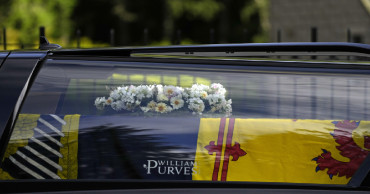
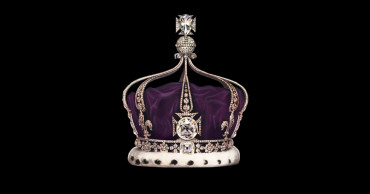
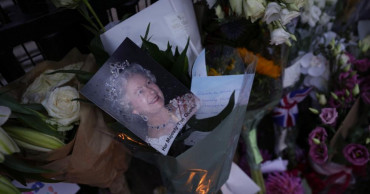
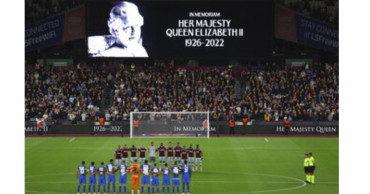
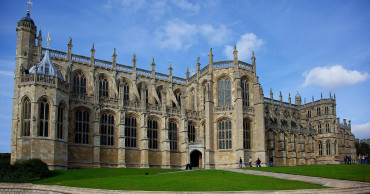
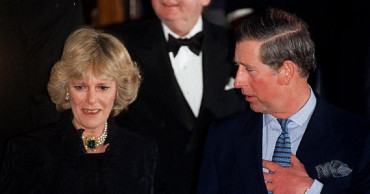
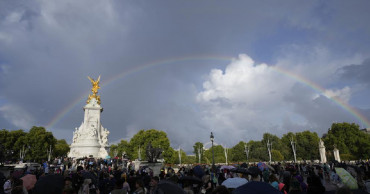
.jpg)








